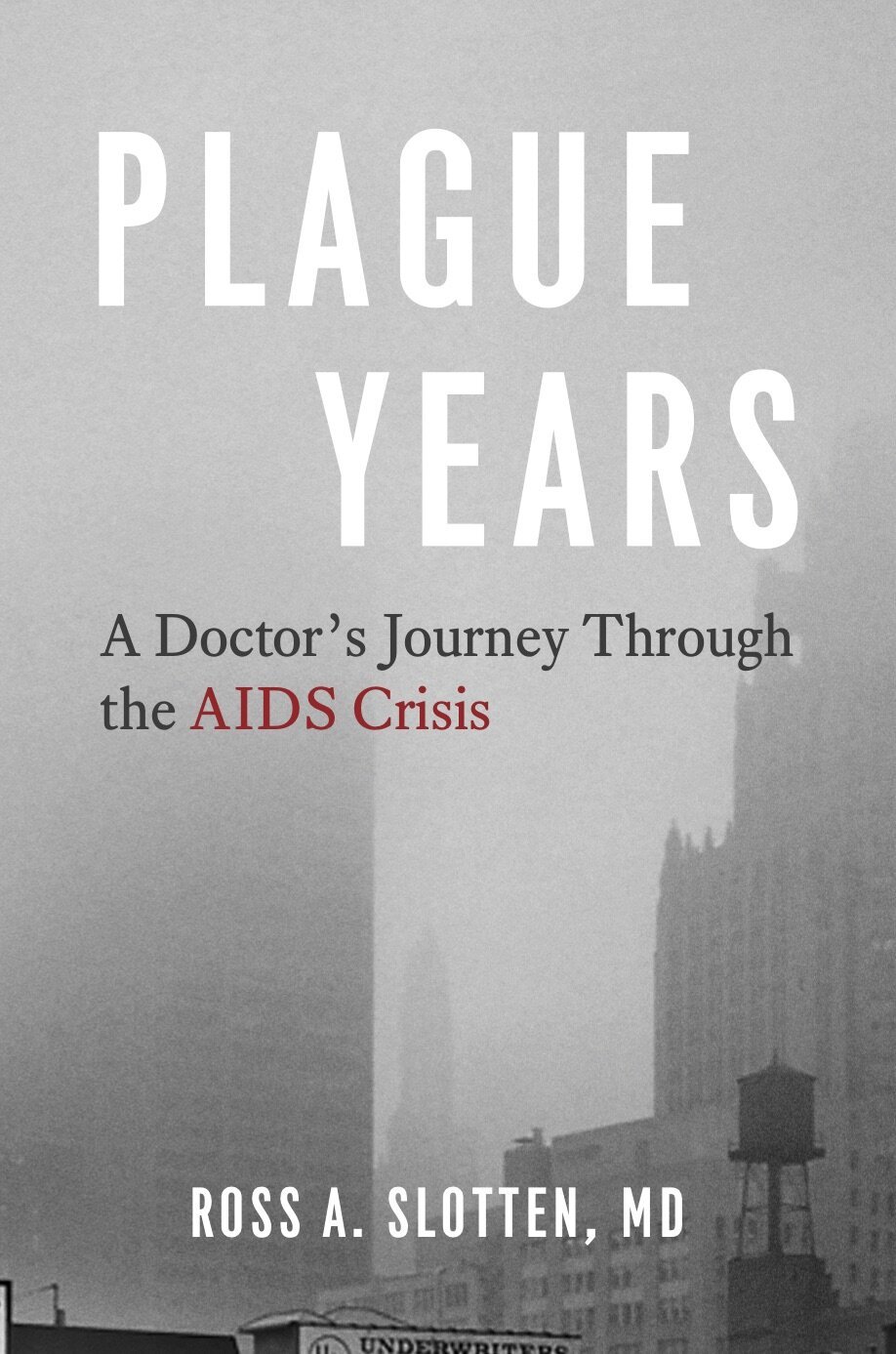Seeing the North American AIDs Epidemic Through New Eyes: On Ross Slotten's "Plague Years"
Ross A. Slotten, MD | Plague Years: A Doctor’s Journey Through the AIDS Crisis | University of Chicago Press | July 2020 | 256 Pages
The HIV/AIDs crisis of the late 1980s produced untold human suffering, political controversy, rapid medical innovation, and two very different kinds of memoirs. First, there are the medical memoirs, written by health professionals who battled the outbreak (for a moving example of the treatment of AIDs in a small town in rural Tennessee, see Abraham Verghese’s My Own Country). In addition to the medical memoirs, there are the personal accounts, written by members of the LGBTQ community who lived through the anxiety, fear, and devastation of AIDs, bearing witness to the deaths of their lovers and friends (Paul Monette’s memoir Borrowed Time is an especially touching example of a personal AIDs memoir). As a student of medicine and history, I cherish both the personal and the medical memoirs. However, I have often felt that each style of storytelling missed something essential about the AIDs crisis. The medical memoirs have always seemed too clinical to me, and they were mostly written by individuals who left the hospital and went home to a paradise far away from AIDs. The best of these medical professionals were able to sympathize with their HIV infected patients, but they were not able to share in their suffering. I prefer the personal memoirs, though I feel that this genre struggles to contextualize HIV within the wider world of biology and clinical medicine, leaving readers without a complete picture of what made the virus that causes AIDs so deadly.
Chicago-based doctor Ross Slotten’s new memoir, Plague Years: A Doctor’s Journey Through the AIDS Crisis, strikes the perfect balance. Slotten is a medical doctor with training in family practice. When the AIDs crisis hit Chicago, many doctors avoided treating those with HIV infection, perhaps out of fear of contracting the virus themselves or out of cultural prejudice against those most likely to become infected (gay men and intravenous drug users). Doctor Slotten did not avoid the afflicted. He opened the doors of his clinic to all and undertook extra training to become one of the very few AIDs specialists in Illinois. Between 1981 and the present, Slotten treated hundreds of men and women with HIV infections. At the height of the crisis, Slotten laments that he was signing more death certificates per year than any other doctor in Chicago.
Slotten recounts his experience in the clinic with acuity and sensitivity. His attention to chronological details sharpened my understanding of the pace at which medical treatment for HIV infection developed, and his precise storytelling allows readers to feel what it may have been like to have treated HIV infected patients.
Doctor Slotten, however, differs from many of his medical peers turned authors on the AIDs crisis. Slotten is a gay man, who both treated HIV and was at risk of contracting the disease himself. The prejudices that tormented Slotten’s patients were all too familiar to him. Slotten’s Plague Years is thus a clinical story that is layered with emotional depth and personal detail, as he grapples with both medical and personal crises. The result is captivating and transformative.
Perhaps no anecdote better illustrates the complexity of Slotten’s memoir than his recounting of a patient named Art. In 1985, Art presented to Doctor Slotten’s clinic with reports of significant weight loss, a common side effect of HIV infection. In an agonizing twist, Art was not a random patient: Art was Dr. Slotten’s ex-lover. As a compassionate human, Slotten possessed a natural human desire that Art’s HIV test come back negative. Art’s test, however, had another significance to Doctor Slotten. Were the test come back positive, it could mean that Slotten himself had the HIV virus, and few knew better than Doctor Slotten how futile medical treatment for AIDs was in 1985. Over the course of their relationship, Slotten confesses that Art had given him three sexually transmitted diseases that were relatively benign. Perhaps Art had given him a fourth as well.
I won’t reveal the results of Art’s HIV test or go into further details about how Doctor Slotten handled the situation as both a physician and a man. It’s not my story to tell. Instead, I’ll leave the narrative on the cliff edge in hopes that it may convince just one more person to get themselves a copy of Plague Years. It will not disappoint.

